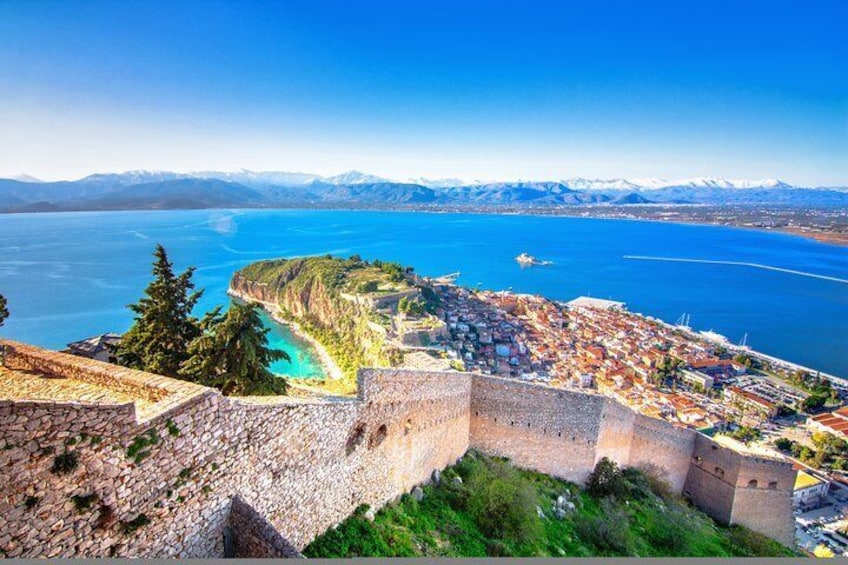
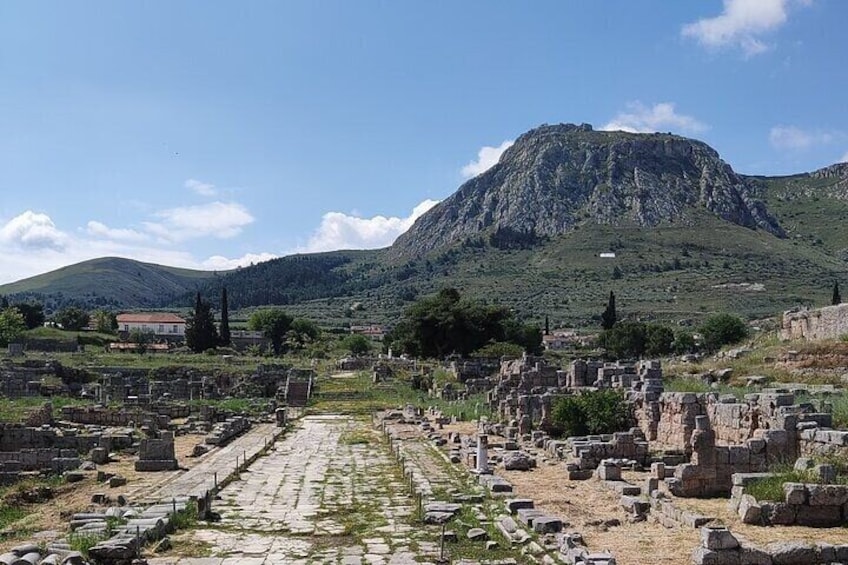
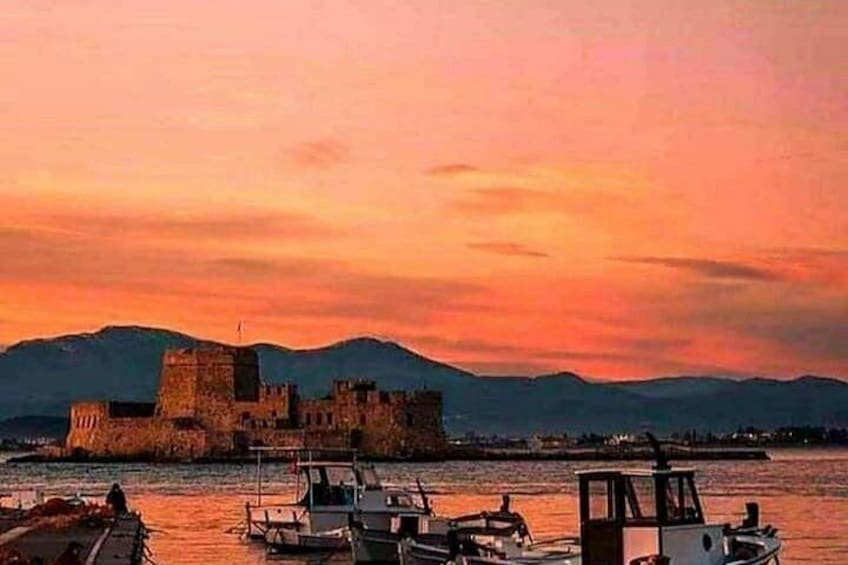
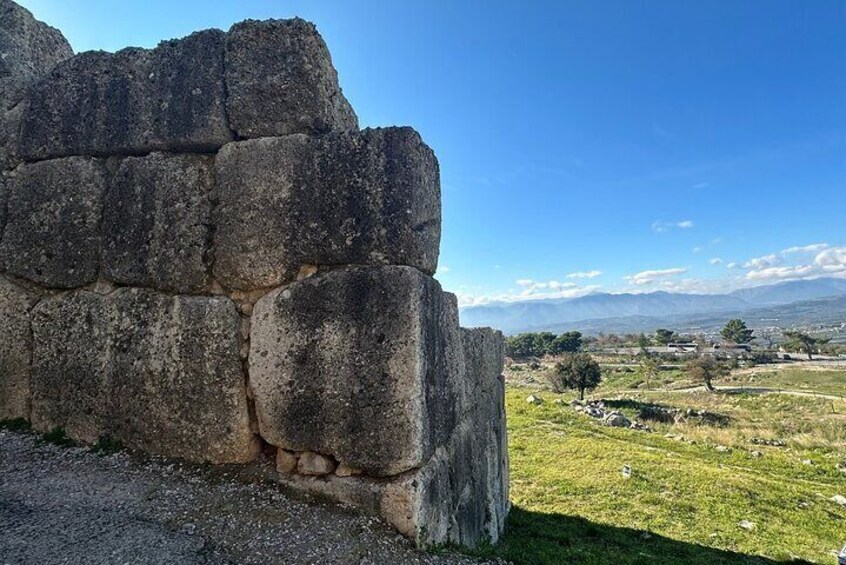
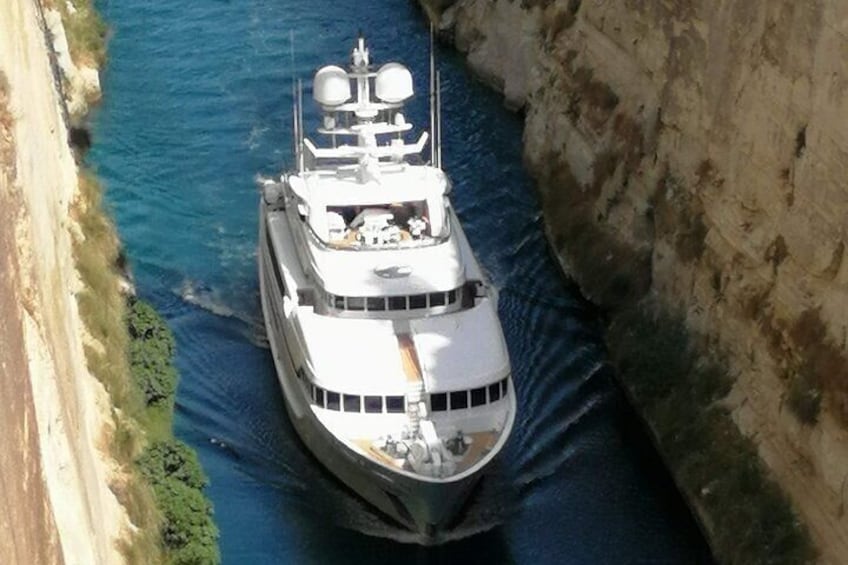
Peloponnese : Ancient Corinth Canal Mycenae Epidauvrous Nafplio
10/10
10 out of 10Features
- Free cancellation available
- 10h
- Mobile voucher
- Instant confirmation
- Selective hotel pickup
- Multiple languages
Overview
One of the most beautiful towns in the area of Eastern Peloponnese as well as one of the most romantic cities all over Greece, Nafplio was the first capital of the newly born Greek state between 1823 and 1834.
Frankish, Venetian and Turkish conquerors left their mark in the town and strongly influenced its culture, architecture and traditions during the centuries. Ancient walls, medieval castles, monuments and statues, Ottoman fountains and Venetian or neoclassical buildings mesmerise the visitor with their unique architecture and beauty
As visitors go up or down the 999 steps of Palamidi, the image that is revealed to them is unique. Nafplio stretches out in front of them with the everyday sounds of a unique world and colours that overflow with culture and earthly and human beauty. With the blue of the sea and the sky matching the myth of the blue-eyed eyes of Nafplio, the son of Poseidon who founded it, the city of love unfolds in front of you the ornaments of its rich history.
Activity location
- Corinth Canal
- 201 00, Isthmia, Greece
Meeting/Redemption Point
- Athens
- Athens, Greece
Multiple meeting/redemption points available, see location information for full list
Check availability
Peloponnese : Ancient Corinth Canal Mycenae Epidauvrous Nafplio
- 10h
- English
Pickup included
What's included, what's not
- Pick-up and drop-off service: Athens Hotel, Airbnb residence or Port
- Groups of 1-3 people are transported in luxurious saloon vehicles.
- This is a private tour, you can customise the programme according to your needs
- Transport via modern, first-class private vehicle
- Expert English-speaking Tour Drivers with extensive historical knowledge
- All vehicles with WiFi, A/C, Bottled Water
- Groups of 4-7 people are transported in comfortable mini vans.
- Entrance fees for all the attractions
- Airport pick-up and drop-off (additional cost)
- Licensed guide to accompany you into archaeological sites
- Optional airport pick-up, available at an additional cost.
- Kindly note that service charge and tips are not included in the price and are left to your discretion.
- Meal in Nafplio - Lunch stops are scheduled, but meal costs are not included.
Know before you book
- Infants and small children can ride in a pram or stroller
- Public transport options are available nearby
- Specialised infant seats are available
- Not recommended for pregnant travellers
- Suitable for all physical fitness levels
Activity itinerary
Corinth Canal
- 15m
Corinthia Region
- 15m
Ancient Corinth (Archaia Korinthos)
- 45m
- Admission ticket not included
Archaeological Museum of Corinth
- 30m
- Admission ticket not included
Temple of Apollo
- 10m
- Admission ticket not included
Ancient Corinth
- 10m
- Admission ticket not included
Acrocorinth
- 15m
- Admission ticket not included
Mycenae
- 1h
Lion Gate
- 19m
- Admission ticket not included
Archaeological Museum of Ancient Mycenae
- 15m
- Admission ticket not included
Citadel and Treasury of Atreus
- 15m
- Admission ticket not included
Palamidi Castle
- 30m
- Admission ticket not included
Nafplio
- 2h
Bourtzi
- 1h
- Admission ticket not included
Syntagma Square
- 30m
Akronafplia Fortress
- 15m
Nafplio
- 30m
Location
Activity location
- Corinth Canal
- 201 00, Isthmia, Greece
Meeting/Redemption Point
- Athens
- Athens, Greece
- Cruise Terminal A
- Akti Miaouli
- 185 38, Pireas, Greece
- Piraeus
- Piraeus, Greece